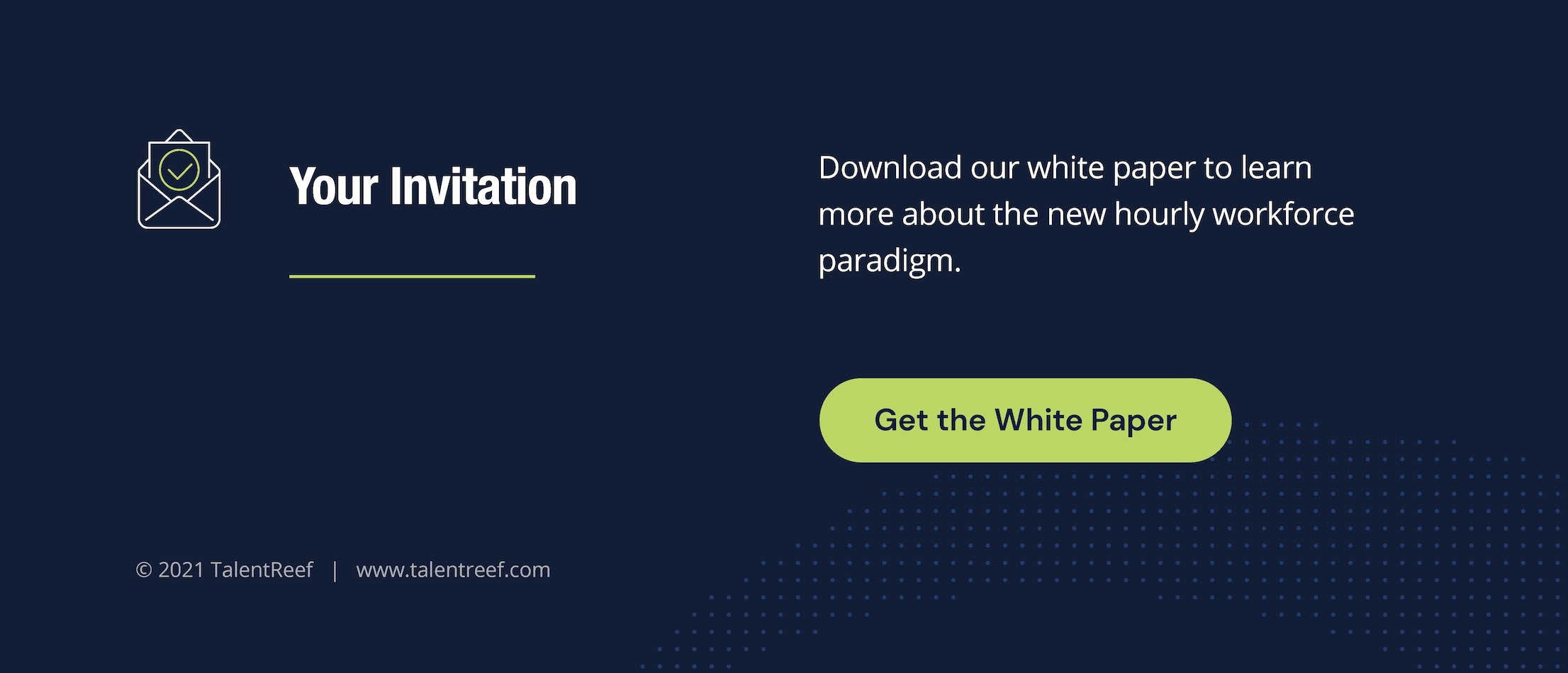Few talent management systems could handle the needs of the hourly workforce before COVID-19. Now, those legacy platforms don’t stand a chance.
Under pressure to fill lots of jobs quickly, hiring managers are looking to streamline the sourcing of candidates, using automation and virtual assessment tools to simplify the process and pinpoint the ones who meet their needs. But over the next year or two, the market will surely change again, so the best talent management system will give you the ability to adapt to changing market conditions, such as being able to turn the dial from quantity to quality of applicants as needed.
For years, many employers and hiring managers of the hourly workforce have tried to leverage applicant tracking systems (ATS) and other traditional talent management tools to boost recruitment. A missing piece, however, was a system tailored to the needs of employers hiring hourly workers.
“TalentReef is one of the leaders in this space, creating the first hourly worker ATS with the ability to recruit, track, and onboard applicants,” said Rich Crawford, CEO of TalentReef. “ATS was a great innovation to meet some of the needs of the hiring challenges the industry now faces, but it’s just one piece of the puzzle.”
When you engage in high-volume, location-based hiring of hourly workers, you need a talent management system that reduces the friction throughout the application process to not only generate a large pool of qualified applicants and match the ideal candidates for the jobs you need to fill, but also moves them through the onboarding process swiftly.
Having worked with more than 100,000 locations for some of the best-known brands in the world, we’ve found these components to be essential in getting the desired results from a talent management system: optionality, speed, flexibility, automation, and data.
Optionality: Reach More Candidates
Reaching today’s hourly workforce means accommodating multiple communication styles, specifically text communications. Recent research found that a whopping 88% of today’s hourly workforce prefers texting, and that the read rate for text messages was 98% vs. just 20% of emails. Texting is no longer an added bonus, but a requirement if you want a frictionless application process that will attract more candidates.
Your talent management system should enable you to promote your recruitment message and your brand through a variety of channels.
Speed: Engage Candidates Quickly
Candidates are looking at many job options and the best candidates get hired quickly, so applicants who don’t receive an immediate response are more likely to move on to the next option. Being able to send a quick text message or rapidly schedule an interview not only increases the likelihood of a positive interview experience and the potential for hire, but also helps prevent interview ghosting.
A truly effective talent management system eliminates the complications of the application process while making it easier for hiring managers to respond to candidates and move them through the interview process. A positive interaction with your company makes them almost 40% more likely to accept your offer.
Flexibility: Adapt to a Constantly Changing Market
Employers of hourly workers need the flexibility to change and optimize configurations and workflows as needed, depending on the location, job position, market conditions, season, and other variables. That includes the ability to pivot easily from the employee-driven labor market of today to a future market when the pendulum swings.
A talent management system should offer the flexibility to adjust hiring strategies for each location and position as the market continues to change.
Automation: Save Hiring Managers Time and Money
A critical component of moving the process along quickly is a talent management system that enables hiring managers to eliminate or reduce the time required for things like completing applications, scheduling interviews, answering applicants’ questions, and assessing their qualifications.
By automating features like interview scheduling, your talent management system can make it easier for managers to handle the responsibility of recruiting by eliminating some of the repetitive, time-consuming tasks.
Data: Optimize Your Hiring Strategy
High-volume hiring decisions can only succeed with adequate data to guide them. Analyzing the data generated from engaging with job applicants and new hires helps you learn vital information to improve your talent acquisition strategy.
The most valuable talent management system allows you to easily identify skill gaps and assess how well a given applicant can fill the gap.
An End-to-End Solution Gets the Job Done
Niche solutions for talent management don’t consider the complexities of the hourly workforce, and they often only fix a single issue and present challenges when it comes to integrating them into the employer’s existing HR ecosystem.
The best solution to the challenges of hiring hourly employees — now and in the future — is an end-to-end talent management platform that provides optionality, speed, flexibility, automation, and data in a single platform.
Together, these elements create a frictionless engagement that attracts more candidates, moves them through interviewing and hiring in a flash, and gets them into a uniform within days.
